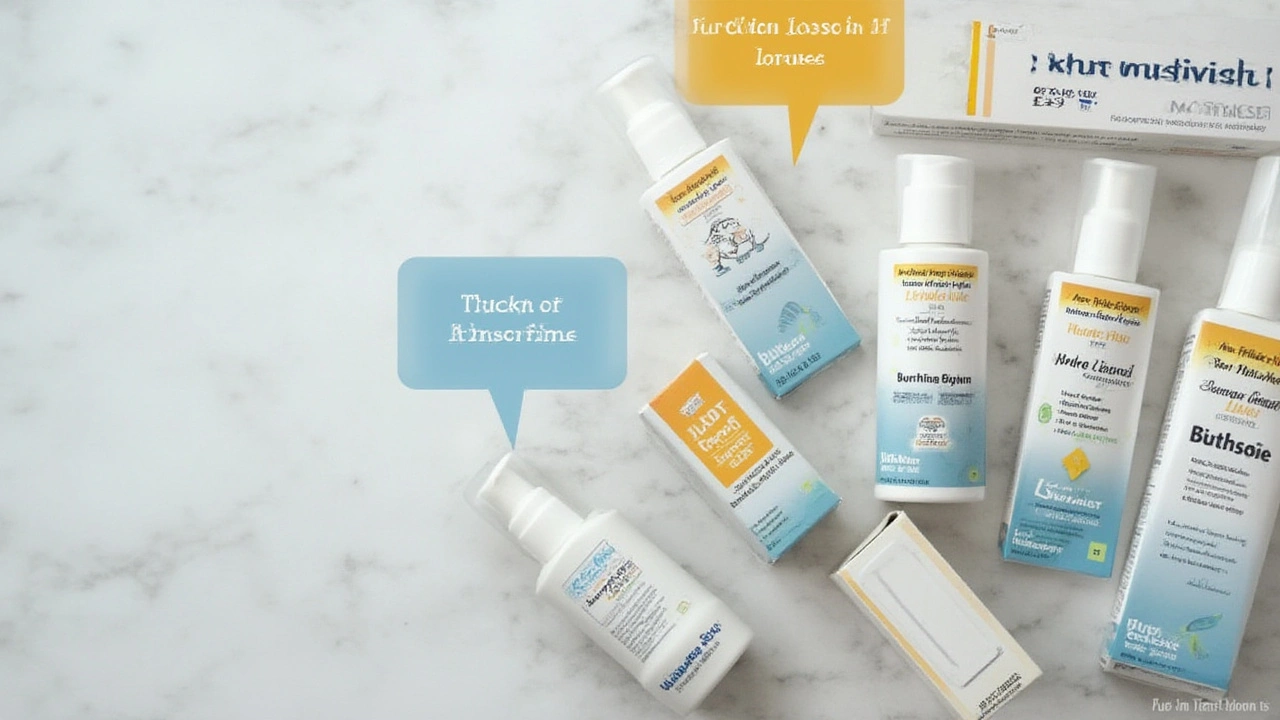Ever been shocked at the pharmacy counter by the price of your trusty Fluticasone nasal spray? You’re not alone. With allergy seasons getting more brutal, health insurance shifting like the Wellington wind, and some folks needing daily sprays just to function, finding a solid substitute isn’t just smart—it’s necessary. Many people in 2025 are switching to alternatives, chasing relief that doesn’t drain the wallet. But which nasal sprays actually work fast, last long, and don’t cost the earth? Let’s dig far deeper than those generic pharmacy pamphlets—and arm you with facts, comparisons, and real-world advice on the top Fluticasone replacements this year.
Why Look for Fluticasone Alternatives? Factors That Matter in 2025
Let’s start with why people are hunting for substitutes in the first place. Fluticasone, often known by names like Flonase, has been a go-to for chronic allergy sufferers for decades. It’s a corticosteroid, reducing nasal inflammation, congestion, and all those sneezy, runny-nosed symptoms. So why look elsewhere? The elephant in the room is price. In New Zealand and globally, Fluticasone’s price tag has jumped. This isn’t just a local story—people from Sydney to Toronto are also reporting sticker shock. Even with insurance, a month’s supply can nudge toward NZD $30–$50, especially for branded sprays.
Another biggie is tolerance and side effects. Some users get nosebleeds, sore throats, or headaches when using Fluticasone for weeks on end. And just like any medication, sometimes it simply stops working for certain people. Prescribers today often recommend cycling alternatives, combining with antihistamines, or swapping to non-steroidal formulas to cut down on overuse symptoms.
The final push is access. Behind-the-counter sprays can mean extra GP visits and prescription fees. If you can get a near-identical spray over the counter for half the price and without waiting, why wouldn’t you?
So, when weighing substitutes, here’s what people want: Something that works as well (or better), kicks in quickly, lasts through Wellington winds or Auckland pollen drifts, and doesn’t hammer the bank account. In 2025, there’s no excuse to stick to a single brand. Let’s unbox the top prescription and OTC alternatives, and see how they really stack up.
Leading Prescription and OTC Alternatives: What’s Available Now?
First, recognize two big categories of nasal sprays: corticosteroid-based (like Fluticasone) and non-steroidal (antihistamines and decongestants). Each group has newer prescription formulas, but a lot of over-the-counter versions are proving just as effective and much cheaper. The arena is bustling with players this year.
Mometasone Furoate (Nasonex and generics) comes up a lot. It’s a close sibling to Fluticasone: fast, long-acting, widely prescribed, and proven in heaps of studies. The big difference? Numerous reports out of the UK, Australia, and NZ say Mometasone causes fewer nosebleeds and less drying—making it friendlier for daily, year-round use. Cost? Generic Mometasone is about 20–30% cheaper than branded Fluticasone at most pharmacies as of mid-2025.
Triamcinolone Acetonide (Nasacort Allergy 24HR) gets plenty of praise for gentle-on-the-nose effects. Unlike Fluticasone, it’s been available OTC in NZ for several years. A 2025 price check shows it averages NZD $18–$25 for a month’s supply. Clinical trials out of Wellington and Melbourne found onset starts within the first day for most users, with full force by day three. Also worth noting: minimal aftertaste and low risk of systemic absorption (that’s medical-speak for ‘doesn’t mess with your hormones much’).
Antihistamine sprays like azelastine (Astelin, Astepro) have surged in popularity too, especially during spring. These aren’t steroids; they’re targeted for symptoms that flare up fast—think sudden sneezing fits or itchy eyes. Azelastine kicks in under 15 minutes for most people. Downside? It’s pricier, averaging NZD $30–$38 per 30ml. Some don’t love the bitter taste, but if you hit allergies like a freight train, azelastine’s speed is unbeatable.
For decongestion, xylometazoline and oxymetazoline nasal sprays (like Otrivin and Drixine) are easy to buy, cheap (usually under NZD $10), and act in under 5 minutes. These aren’t long-term players—you shouldn’t use them more than five days straight—but they’re a lifeline for stuffy mornings or quick fixes before a night out. Studies show consistent relief from congestion but warn about rebound effects (where your nose gets worse if you use them too often).
For a full cross-section of potential options, check this thorough list of alternative to Fluticasone nasal spray products, which includes both lesser-known brands and some natural supplement-based options that have exploded this year.

Comparing Cost, Onset, and Duration: A Breakdown by Popular Brands
Numbers talk, so let’s lay out the core stats for 2025’s leading prescription and OTC options. Here’s how they shake out on price, how quickly you feel relief, and how long each spray holds strong:
| Brand or Generic | Active Ingredient | Type | Avg Monthly Cost (NZD) | Onset (Minutes/Days) | Duration Per Dose | OTC? |
|---|---|---|---|---|---|---|
| Flonase | Fluticasone Propionate | Corticosteroid | $38 | 12-24 hrs (2-3 days for max effect) | 24 hrs | Yes |
| Nasonex | Mometasone Furoate | Corticosteroid | $28 (generic $20) | 12-24 hrs (2-3 days for max effect) | 24 hrs | Prescription |
| Nasacort | Triamcinolone Acetonide | Corticosteroid | $24 | 6-12 hrs (1-2 days for max effect) | 24 hrs | Yes |
| Astepro | Azelastine | Antihistamine | $33 | 5-15 min | 12-24 hrs | Prescription/OTC |
| Otrivin | Xylometazoline | Decongestant | $10 | 5 min | 8-10 hrs | Yes |
What stands out? Nasacort wins on cost and ease of access in New Zealand, with most pharmacies stocking it OTC. Astepro delivers the fastest kick—handy if you get walloped by sudden pollen bursts. Mometasone is the best bet for people who get side effects from Fluticasone, but local rules might require a quick GP chat to access it. Most corticosteroid sprays need a day or two for full force, but they offer steady, once-daily protection. For that instant, nasal-clearing feeling, the classic decongestants are unbeaten, just don’t lean on them for more than five days unless you want your symptoms boomeranging right back.
Want to save the most? Get a prescription for generic mometasone if you can—it often undercuts the most popular brands by 30–40% at Kiwi chemists. If you value fast onset above all, azelastine is your friend. If you just need a seasonal fix without fussing around, Nasacort or Otrivin are both wallet-friendly.
Small Tips That Make a Big Difference (and What Not to Overlook)
Alright, let’s switch gears from clinical to practical. Because picking a spray is just the start—using it right and getting the best bang for your buck is the real key. Ever noticed that a “once-a-day” spray feels like it wears off by dinner? Technique can make or break your results. Always aim the nozzle slightly outwards, not straight up your nose. This helps coat more of the inflamed tissues and avoids wasting puffs up into your sinus cavity (where it can’t do much).
If you’re switching brands, leave at least a few days between stopping a corticosteroid and starting another. Many Wellington doctors recommend using a saline rinse before your daily spray—this clears out gunk, pollen, and mucus, letting the active medicine hit home. Using two different sprays? Space them out by at least 20 minutes; some combos (like steroid plus antihistamine) work even better given a bit of breathing room.
Travelling? Check airline rules, especially if your spray is prescription-only or liquid limits are strict. Many sprays are fine in hand luggage, but it’s smart to keep them in the box with pharmacist labels attached, especially if you’re hopping between Australia and New Zealand where customs are getting stricter this year.
One other hidden factor: storage. High humidity or leaving sprays sitting in a hot car can wreck the stability of the active ingredient—especially in cheap generics with less robust packaging. Look for a cool, dark spot like a drawer or medicine cabinet (not the glovebox or bathroom shelf).
And if you’re hitting the maximum dose or still miserable week after week, don’t just keep doubling up. Chronic overuse of corticosteroids can thin the nasal lining—ever noticed a sudden increase in nosebleeds? That’s your warning sign. Have a quick check-in with your doc or even a local pharmacist; many offer in-pharmacy consults for free in 2025, and it can save you serious hassle and expense.
With so many fluticasone substitutes on the market—and several you can now buy straight off the pharmacy shelf—navigating your choices has never been easier or more cost-effective. Don’t just accept the first spray you’re handed; with the right tweaks and choices, you could get better results, save cash, and actually enjoy allergy season for once.

